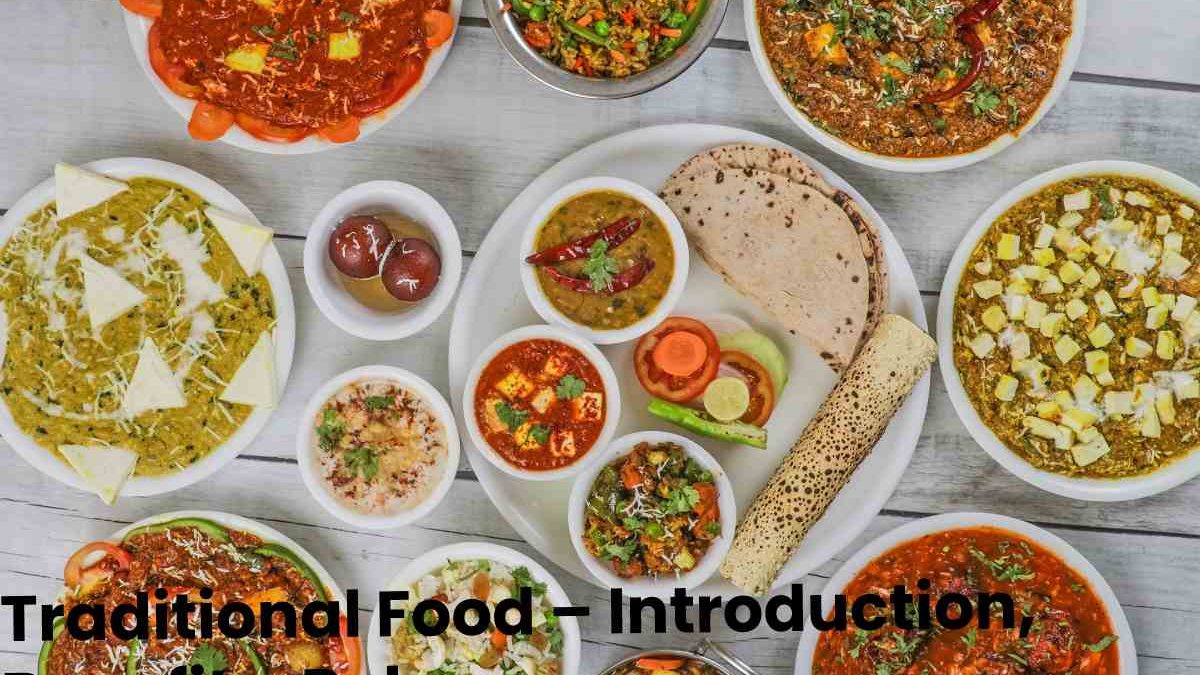Table of Contents
Introduction
Traditional food is the production steps performed in a particular area at a national, regional, or local level. They are authentic in their recipe (mix of ingredients), raw material origin, and production process. Traditional foods are part of the gastronomic heritage. It has been commercially available for about 50 years.
The month of April is Traditional Foods month here at Keeper of the Home. Wide variety of traditional foods (raw milk, grains, fermented foods, grass-fed meats, cod liver oil, and a few). We’ll share some of the history, the benefits, and the how’s of preparing these nourishing foods.
Traditional Foods Aren’t
- Foods in their original form — not modernized, not processed, not packaged.
- That has long maintained good health.
- Foods that are whole and nutrient-dense are traditional food.
- Basic: meat and poultry, eggs, whole grains, fish, beans and legumes, vegetables, fruit, nuts and seeds, dairy, fats.
Traditional Foods Aren’t
- A one-size-fits-all diet
- You’ll find the so-called “health foods” with bold labels on the store shelves.
- Low fat, low cholesterol, vegetarian or vegan is not a traditional food.
- Boring, bland, undesirable.
What food Tells us about Culture?
On an individual level, we grow up eating the food of our cultures. It becomes a part of who each of us is. Many of us associate food from our childhood with warm feelings and good memories, and it ties us to our families, holding a unique and personal value for us. Food from our family often becomes the comfort food we seek as adults in times of frustration and stress.
When I was sick as a kid, I couldn’t eat rice because I was too weak, so my mother would cook soup and bring it to bed for me. The smell and taste of the soup became something very familiar to me. Whenever I feel tired or stressed, I remember the stew my mom made for me, and I feel hungry for that soup.
Which Foods are Traditional Food?
- Pastured, grass-fed, free-range meat and poultry are a traditional food. Also included are organ meats from any animals, highly prized by traditional cultures.
- Wild fish, preferably from less polluted waters (like Pacific/Alaskan salmon, for example). Cod liver oil is also a historically-valued natural food supplement and an essential source of nutrients.
- Eggs from pastured hens.
- Raw dairy products from cows and goats are grass-fed are a traditional food. In addition, it includes cultured dairy products like yoghurt, kefir, creme fraiche or sour cream, and cheeses.
- Soaked whole grains, sprouted or made using sourdough fermentation methods.
- Organic or ecologically grown vegetables and fruits are healthy.
- Bone broths are made from the bones of the animals, as mentioned above, and fish.
- Fats such as butter, beef grease, and other animal fats, unrefined coconut oil, palm oil, extra virgin olive oil are also considered traditional food.
- Raw nuts and seeds soaked improved digestion.
- Wholesome sweeteners like raw honey, maple syrup, dried fruits, small amounts of unrefined sugars like Sucanat or Rapadura are healthy food.
- Unrefined sea salt, which is full of minerals. Also, fresh or dried herbs and spices.
Is The Indian Diet Healthy? Power of Traditional Food and Its Many Health Benefits
Indian food is most famous for its diversity. In addition, the variety of foods, spices, and dishes native to India makes Indian food one of the most wholesome globally. But, Indian food began to be categorized as unhealthy because it is linked to high sugar and high carb food which contribute to high cholesterol.
Traditional Indian food, however, is not only healthy but is also incredibly tasty, with a lot of health benefits. Indian food supports immunity, inflammation, brain function, and several other functions in the human body.
The Role of Traditional Food in our lives
Cultural foods and traditional food practices provide a deep connection to community and healthcare. They connect us to our past, foster socialization in the present, and create memories for the future. Plus, they play a significant role in dietary compliance and success.
Similarly, I connect to the food traditions of East India every time I prepare a vegetarian curry dish, such as dhal with turmeric or saffron. To people who aren’t familiar with them, these dishes may not seem to fit the Western image of nutritious or healthy food — but filled with fibre, complex carbs, and vegetables.
How does Culture affect what you eat?
Culture influences your foods, religious and spiritual practices, and perspective on wellness, healing, and healthcare. Research suggests that even your thoughts about certain foods and your willingness to try new one’s influenced by your cultural background. Moreover, your classification regarded as food, and what isn’t, is linked to your Culture. Therefore, healthy eating must interpret and also understood within the Culture.
The importance of Traditional Food and Ethnic Foods in the Context of Food Security
The role of traditional and ethnic foods will increase in their consumption pattern with growing demand from the population. These are considered healthy foods, and the anchorage they hold creates higher demand through many folds. Thus, there is enough room for the production sector to progress in designing new equipment and increasing the speed of manufacturing these foods. In addition, the global fusion of many traditional and ethnic foods has led to many combination foods. These foods add a new dimension and present challenges for ingredient producers and regulators. Thus, the functional ingredients of these foods lead to better health overall.
People are aware that healthy ageing or improving the quality of life during ageing is also an area where the nutritional value of foods can strengthen the body’s cells and thus prevent or delay the onset of disease. Today, the integration of biotechnology and bioinformatics makes it possible to preserve large databases of traditional foods and understand them from the perspective of molecular gastronomy and microbiome footprinting. Therefore, the traditional and ethnic food knowledge platform enhances by an integrated science-based approach to safety and hygiene.
Conclusion
Healthy eating consumes multiple nutrient-rich food groups to support good health. It doesn’t have a specific look or requires particular foods. Contrary to mainstream health and wellness messages, healthy eating differs across communities and regions.
American and Canadian dietary food guidelines encourage including cultural foods as a part of healthy eating. Therefore, nutrition messages and counselling often lack competence and inclusivity to reinforce the importance of cultural foods.


